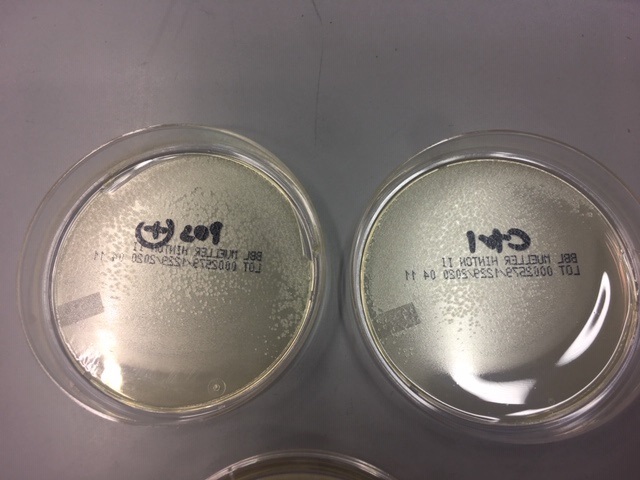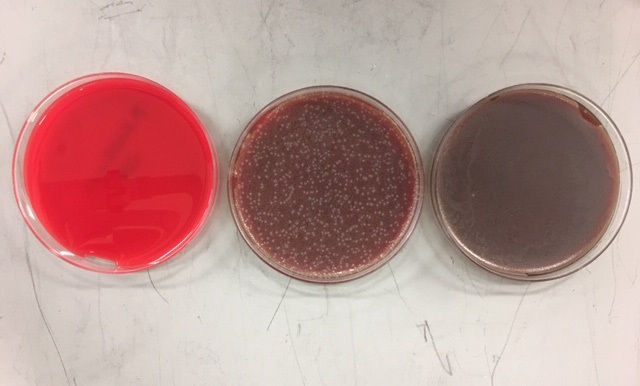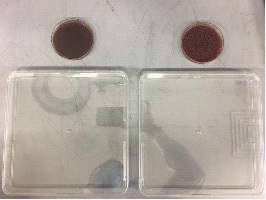
Journal of Clinical Images and Medical Case Reports
ISSN 2766-7820
Case Report - Open Access, Volume 2
Antimicrobial effects of an organosilane-based disinfectant
Elliot Zai Feng Eu1,2*; Prahlad Govinda Krishnan1; Wee Hoe Gan1,3,4
1 Department of Occupational and Environmental Medicine, Singapore General Hospital, Singapore.
2 Preventive Medicine Residency Programme, National University Health System, Singapore.
3 Saw Swee Hock School of Public Health, National University of Singapore, Singapore.
4 Duke-NUS Medical School, National University of Singapore, Singapore.
*Corresponding Author: Elliot Zai Feng Eu
Department of Occupational and Environmental
Medicine, Singapore General Hospital, Outram Road,
Singapore 169608.
Email: elliot.eu@mohh.com.sg
Received : July 07, 2021
Accepted : Aug 25, 2021
Published : Aug 31, 2021
Archived : www.jcimcr.org
Copyright : © Elliot EU (2021).
Abstract
Organosilane-based disinfectants have been purported to impart lasting antimicrobial properties when applied to a surface. The implications being dramatic reduction in pathogen transmission via fomites and therefore of great public health importance as a means to limit the spread of outbreaks such as COVID-19. We conducted experiments in our laboratory to assess the efficacy of one such product, which reported anti-microbial protection of up to 120 days, as an operational report for our hospital. 1) The organosilane product was applied on a Mueller Hinton agar plate and left overnight underneath an airconditioned vent to promote mould growth. 2) The organosilane product was applied on a Blood Agar Plate (BAP) that was inoculated with E. Coli and observed over 24 hours. 3) Lastly, the organosilane coating was applied onto plastic plates to simulate hospital ward surfaces. Simulated pathogens (suspension of oral commensals) were spread across the plastic plates, swabbed at 1 hour, 8 hours and 24 hours and then incubated for 24 hours. In all 3 experiments, there was no significant difference in microbial growth between the control and intervention arms. Although our experiments did not assess different methods of application nor effect on different materials applied, the lack of demonstrable effects of the organosilane product calls for caution against widespread use of a product whose claims are unverified.
Keywords: organosilane; disinfectant; environmental cleaning; fomites.
Abbreviations: COVID-19: Coronavirus Disease of 2019; ‘SARS-CoV-2: Severe Acute Respiratory Syndrome Coronavirus-2.
Citation: Elliot Eu, Krishnan PG, Gan WH. Antimicrobial effects of an organosilane-based disinfectant. J Clin Images Med Case Rep. 2021; 2(4): 1284.
Introduction
Organosilane-based products have been marketed for their self-disinfecting effects when applied to treated surfaces. Organosilanes are carbon-silicone compounds that form stable, adhesive bonds with inorganic surfaces such as glass or metal through covalent bonding [1]. One manufacturer likens the altered physical surface to having ‘millions of needle-like structures’ that, in addition to bacteria and fungi, claims to be effective against the SARS-CoV-2 virus.
The public health benefits of such a product, if proven to be true, are far-reaching and would dramatically reduce pathogen transmission from contact with fomites. However, studies on the efficacy of organosilanes’ antimicrobial properties are limited, with reports demonstrating both beneficial and no effects.
Methods
In light of the limited evidence, a simple evaluation study of the antimicrobial effects of an organosilane-based disinfectant was conducted. The particular disinfectant being evaluated advertises its antimicrobial effects as lasting up to 120 days. The evaluation sought to provide quick qualitative verification of the advertised antimicrobial properties of the disinfectant.
The evaluation tested the inhibitory effects of the organosilane-based product on the growth of Escherichia coli, mould and oral commensals in a two-step process. Due to the need for specialised test apparatus not available in a clinical laboratory, virucidal efficacy of the disinfectant was not included in the evaluation.
In the first step, a simple in vitro assessment was performed to test the efficacy of the disinfectant in reducing environmental contamination (including moulds) and its antimicrobial effects.
The organosilane-based disinfectant coating was prepared as per the manufacturer’s instructions and sprayed onto Mueller Hinton and blood agar plates (treated plates) from a distance of 40-55 cm. Sterile swabs were used to spread the product evenly across the plates and allowed to dry for 30 minutes. Control plates were without the disinfectant.
Two Mueller Hinton agar plates (one treated and one control) were left overnight underneath an air-condition vent in the laboratory to promote the growth of mould on the plates. Two blood agar plates (one treated and one control) were inoculated with a 0.5 McFarland suspension of Escherichia coli to test the disinfectant’s antimicrobial effects.
In the second step, the disinfectant was tested on simulated environmental surfaces for its antimicrobial effects.
Six plastic plates measuring 9 by 9 inches each were used to simulate environmental surfaces. The organosilane-based product was applied on three plates and the remainder were used as controls. A suspension of oral commensals was prepared and spread evenly onto all six plates and left in the open on the same bench. Each set of plates (one treated and control) was sampled at one hour, eight hours and 24 hours, respectively. Sampling was performed by swabbing the entire surface of each plate with sterile swabs moistened with Amies media, inoculated onto blood agar plates and incubated for 24 hours in aerobic conditions.
Results and discussion
In step one of the evaluation, visual inspection of the set of Mueller Hinton agar plates sets and the set of blood agar plates after 24 hours showed growth of mould and Escherichia coli, respectively including on the treated plates (Figure 1). The findings suggest that the disinfectant’s advertised anti-fungal and anti-bacterial properties could not be replicated in this in vitro assessment.
In step two of the evaluation, all three sets of treated and control plastic plates yielded mixed growth of bacteria on blood agar plates after one, eight and 24 hours (Figure 2). The findings of the evaluation did not support the antimicrobial properties of the organosilane-based product being tested.
The results of the authors’ evaluation study demonstrated that the application of a commercially available organosilane disinfectant did not confer any, let alone prolonged and sustained, anti-bacterial or anti-fungal action on surfaces.
Boyce et al applied two different commercially available organosilane products to various high-touch points around a community teaching hospital and sampled them 24 hours after their last cleaning [2]. The resultant mean colony counts were similar between the surfaces with and without organosilane-based product. Murray et al found that one particular organosilane product reduced bacterial activity by 0.53 Log10 after three days, however only for Staphylococcus aureus [3]. Another study suggested a significant reduction in bacterial load of surfaces after application of an organosilane-based product around an intensive care unit environment [4].
While deliberating the apparent lack of residual antimicrobial activity, Boyce et al considered whether using a cloth to apply the organosilane-based product had affected its efficacy, as the product could preferably bind to the cloth rather than being transferred to the wiped surface. Further to this point, the study by Baxa et al found that an organosilane-based product applied to Formica was able to reduce more inoculated bacterial burden than the same application on stainless steel [5]. The study also found that when applied to fabric, the organosilanebased product conferred a greater reduction in microbial viability for a period of up to 14 days. In both instances, organosilane was applied by soaking the test surfaces in the product solution. This raises the point that an organosilane-based product’s lasting antimicrobial effects might be affected by the method of application as well as how successfully the product binds to different surfaces.
There are a number of limitations to the authors’ evaluation study. First, it is designed as a rapid operational evaluation and not a scientific experiment under controlled, standardised conditions. There were no multiple intervention arms that would control for all possible variables such as different methods of application, testing on different surfaces, or controlling ambient temperature and humidity. Second, the evaluation did not include quantitative measures of antimicrobial efficacy, which would have conferred a more objective and stronger conclusion to the organosilane-based disinfectant’s antimicrobial effects, or lack thereof. Third, the capabilities of the clinical laboratory did not allow the virucidal efficacy of the disinfectant to be evaluated. This will limit the generalisability of the findings to product’s efficacy against enveloped viruses, particularly SARSCoV-2.
The findings of the organosilane-based product evaluation did not support its claims of antimicrobial activity, specifically for moulds and Escherichia coli. In addition, as oral commensals are generally known to be more resistant to disinfectants than enveloped viruses [6], it could be indirectly inferred that the particular organosilane-based product is unlikely to be useful as an environmental disinfectant in this period of heightened vigilance due to the COVID-19 pandemic. Further studies will be needed to confirm the antimicrobial effects of organosilanes, especially if it were to be used for mass environmental disinfection in a healthcare environment or a community setting.
Acknowledgements: The authors will like to express our appreciation to the Department of Microbiology, Singapore General Hospital for the assistance in microbiological testing and evaluation.
References
- Dawood M. 4 - Durability of steel components strengthened with fiber-reinforced polymer (FRP) composites. In: Karbhari VM, ed. Rehabilitation of Metallic Civil Infrastructure Using Fiber Reinforced Polymer (FRP) Composites. Woodhead Publishing. 2014: 96-114.
- Boyce JM, Havill NL, Guercia KA, Schweon SJ, Moore BA. Evaluation of two organosilane products for sustained antimicrobial activity on high-touch surfaces in patient rooms. Am J Infect Control. 2014; 42: 326-328.
- Murray J, Muruko T, Gill CIR, et al. Evaluation of bactericidal and anti-biofilm properties of a novel surface-active organosilane biocide against healthcare associated pathogens and Pseudomonas aeruginosa biolfilm. PLOS ONE. 2017; 12: e0182624.
- Tamimi AH, Carlino S, Gerba CP. Long-term efficacy of a self-disinfecting coating in an intensive care unit. American Journal of Infection Control. 2014; 42: 1178-1181.
- Baxa D, Shetron-Rama L, Golembieski M, et al. In vitro evaluation of a novel process for reducing bacterial contamination of environmental surfaces. Am J Infect Control. 2011; 39: 483-487.
- Russell AD. Bacterial resistance to disinfectants: present knowledge and future problems. J Hosp Infect. 1999; 43: S57-68.



